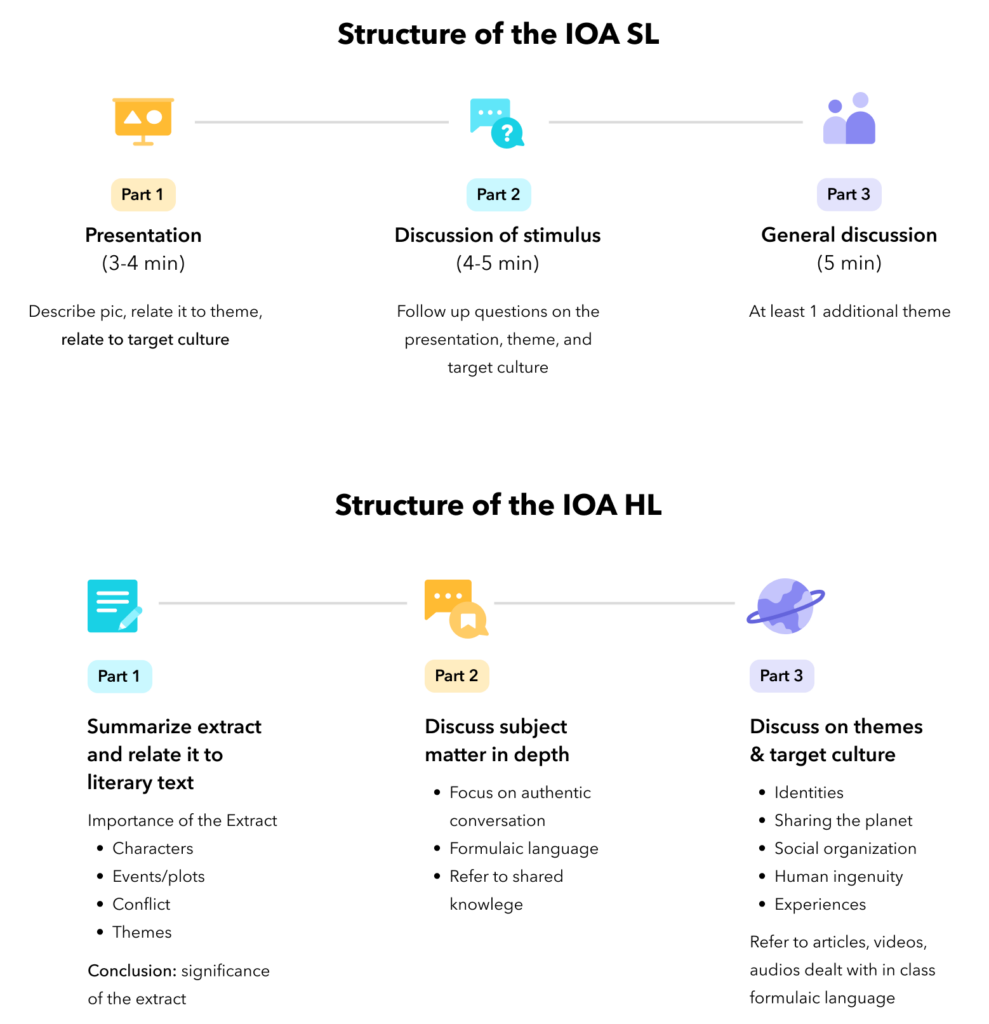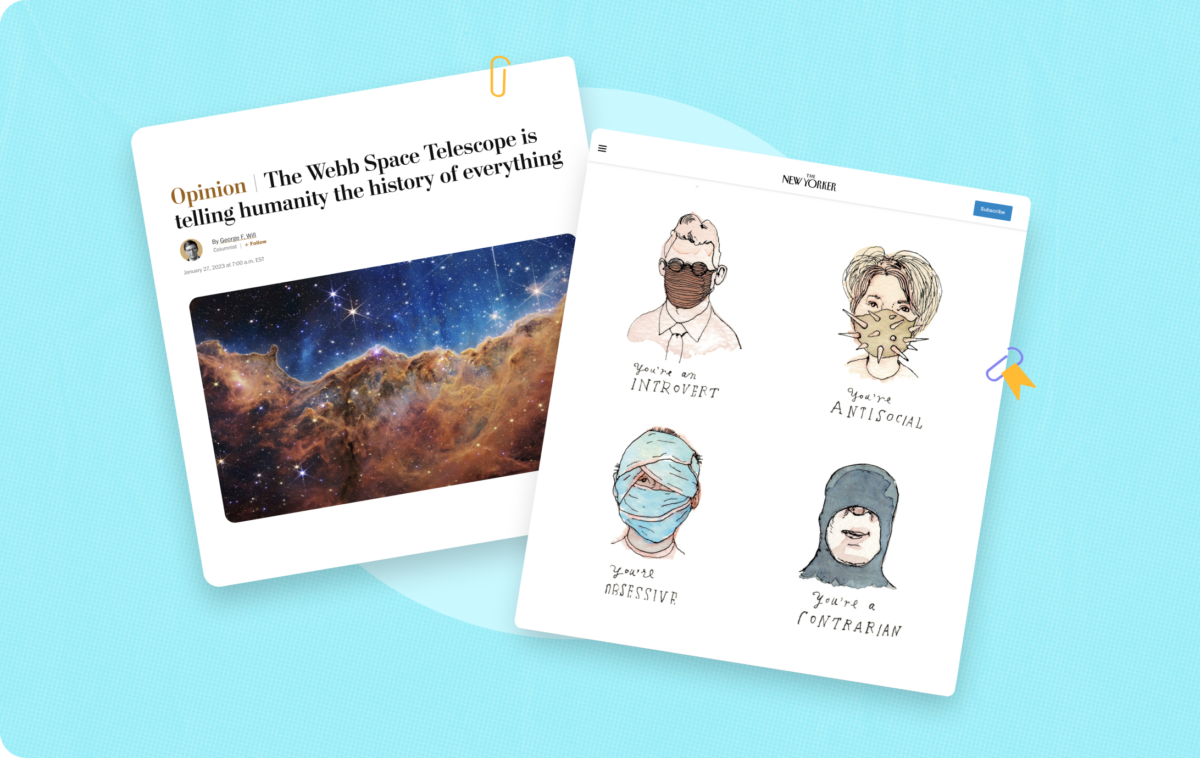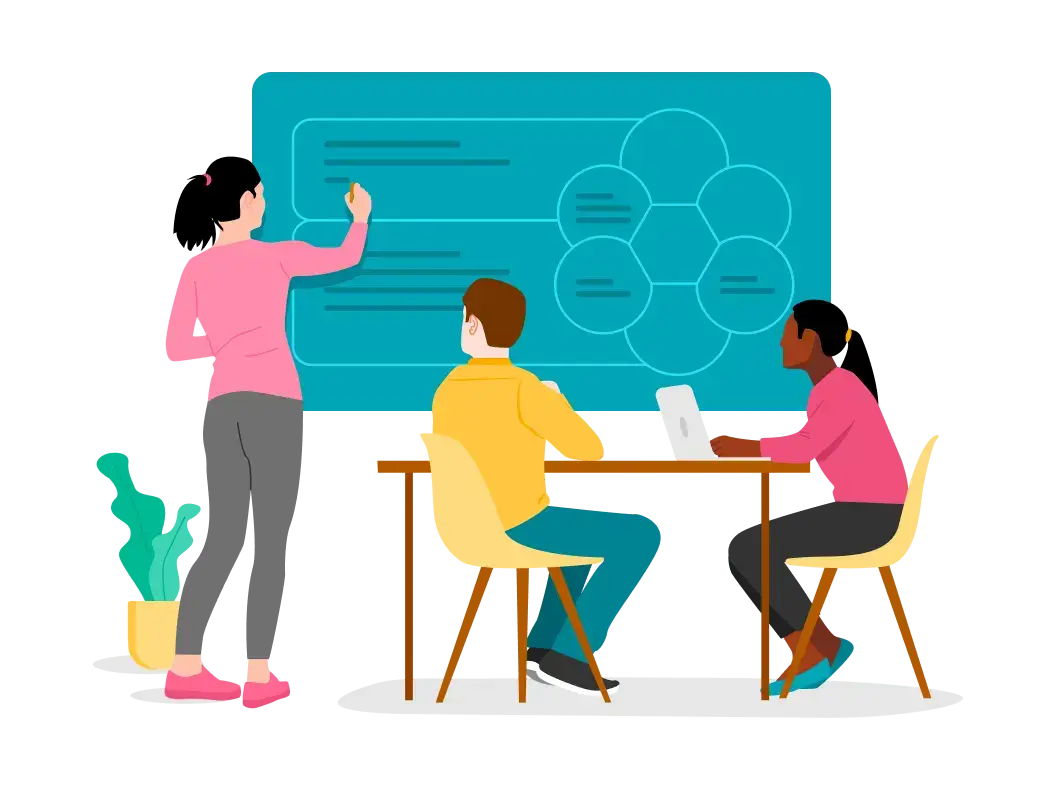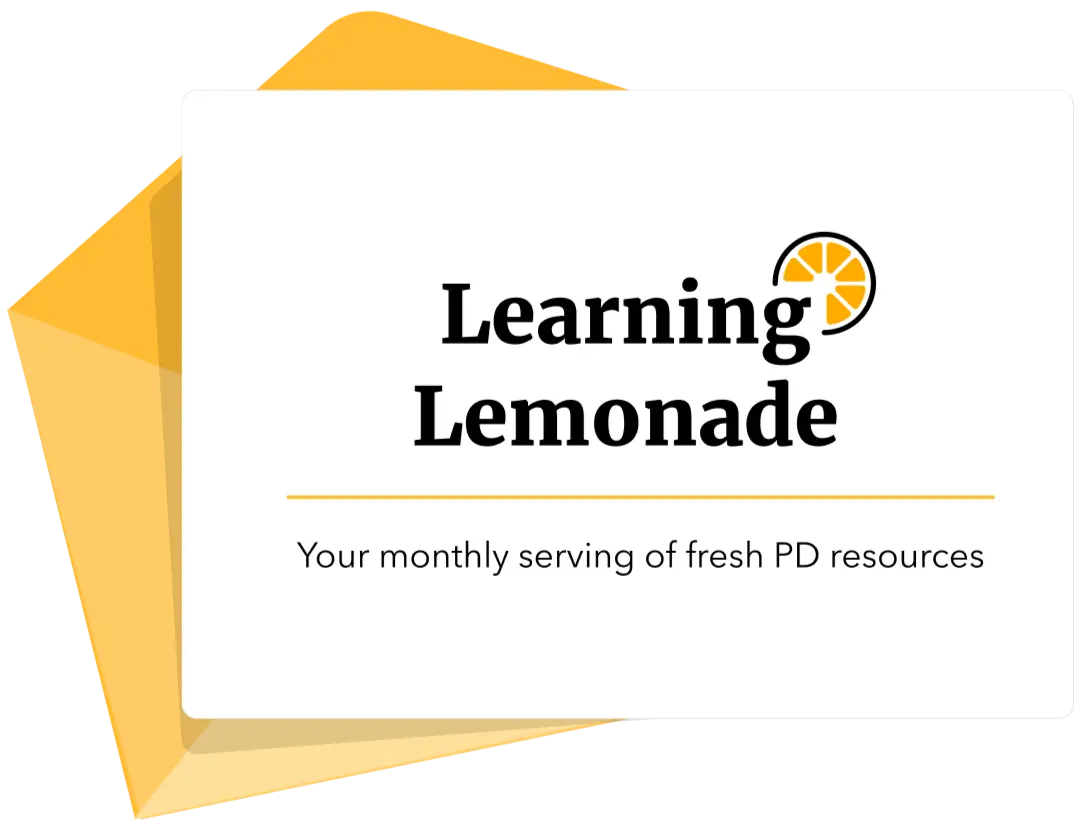Classroom Activity Ideas for the IOA
Helping students develop skills for their orals
The individual oral activity (IOA) in the language B course is designed to help students develop their analytical and critical thinking skills. It is important for us, as educators, to create opportunities for students to build these skills and reflect on their progress. Here are some classroom activity ideas you can use to help students master the skills needed for the IOAs. Activities included here will help students with extract analysis and presentation, anticipating theme-based questions, and developing theme-related vocabulary.
Many of the activities can be modified based on your classroom contexts and student needs, but the idea is to guide students toward a deeper understanding of themes and texts, and what success looks like on the IOA. So let’s jump in and get started!

This activity involves dividing students into small groups to get them acquainted with the process of the IOA. Students collectively analyze text extracts, prepare and present mock IOAs to their own groups, and receive peer feedback. It is an effective way to have all students practice for the IOAs collaboratively. Here are the steps involved:
Setting up
- Select a couple of extracts that are good for analysis with your students
- Make A3 copies and paste them on even bigger sheets of paper to make a poster. Ensure there is enough space for adding notes.
- Hang/post the posters across the room or leave them at different tables
- Divide students into groups of three and assign them a table/wall.
Preparation and analysis
- Students need to mark the poster assigned to their group indicating:
- Why the extract is important
- Connections to themes
- Observations
- Questions
- Connections to other texts
- Questions that can be asked in relation to the extract or the themes that relate to it.
- After 20 minutes, groups move to another poster and respond to what is written there, add ideas, and ask questions. Here’s a sample of a marked-up poster with student notes:

- After 8-10 minutes, all groups go back to their original poster and review the new notes to discuss suitability.
Peer-reviewed presentation
- Each student in the group is assigned a different role for a presentation:
- Presenter
- Teacher
- Notetaker (will grade the performance)
- Each student records a mock IOA and presents to the other two who grade and provide feedback. This is repeated till all three students have presented.
- The teacher walks around the classroom observing how students perform and can then give feedback on pluses and minuses to the whole class.

The IOA is structured into three parts. For the third part, students and teachers interact around other prescribed themes that have not previously been discussed during the IOA. Here’s a quick refresher on the structure of the IOA for your reference:

One way of helping students think about possible questions that may be posed during the IOA is to build a question bank based on themes and sub-themes/topics. Both teachers and students can come up with these questions based on class discussions as well as materials they have been exposed to. This activity is designed around a sample question bank for the theme of ‘Social Organization’. It is a useful way to equip students with interesting ideas to tackle a variety of questions regarding a certain theme or topic.
- Download this sample question bank and distribute one set of questions to small groups of students.
- Give students time to discuss the questions and make a visual representation of what resources from class they can use to answer the questions. You can ask them to connect it to another theme or topic as well.
- Next, give each group time to make short presentations or put together a gallery walk based on the resources they come up with. All groups add more ideas and comments to the work presented.

For students to be able to have sustained conversations around texts and themes, it’s important for them to build up a rich vocabulary. This activity helps students build a wide range of vocabulary, including idiomatic expressions, in a way that they won’t forget easily!
- Divide the students into groups. Share 2-3 images from this sample photo bank with each group.
- Have students identify a theme and sub-topic that best relates to each of the images they have been given. They should have a different theme and sub-topic for each image provided.
- Once they’ve identified a theme, ask them to think of words/phrases/idiomatic expressions connected to the theme/sub-topic that come to mind when they see the images. Have them draw these out as a mind map on a large sheet of paper.
- From the list of words that emerge, have them choose 4-5 words they like best and come up with synonyms for these.
- Each group then displays their mindmap in a gallery walk. Students can go around the room ‘collecting’ interesting words for each of the five language B themes and adding them to their personal notebooks.












